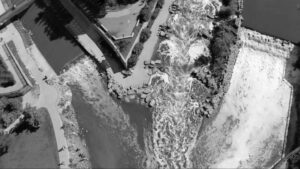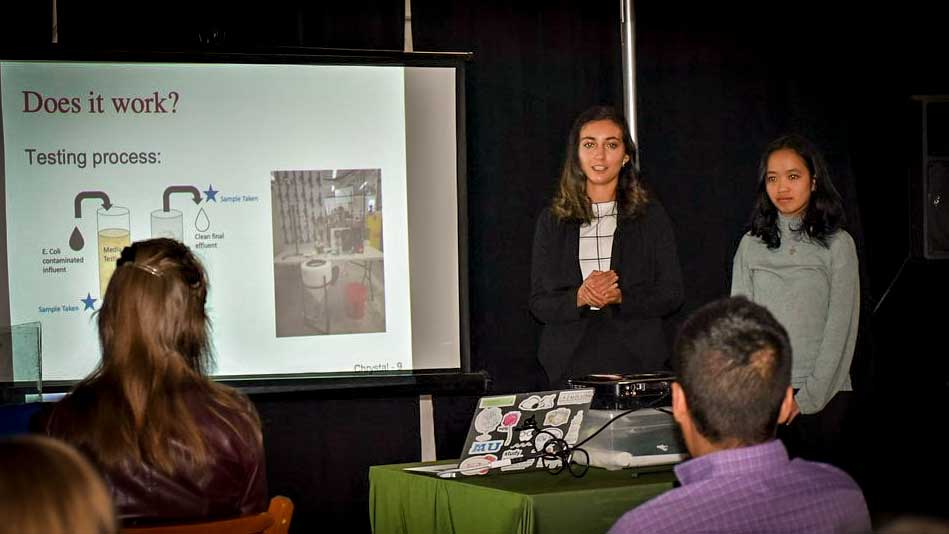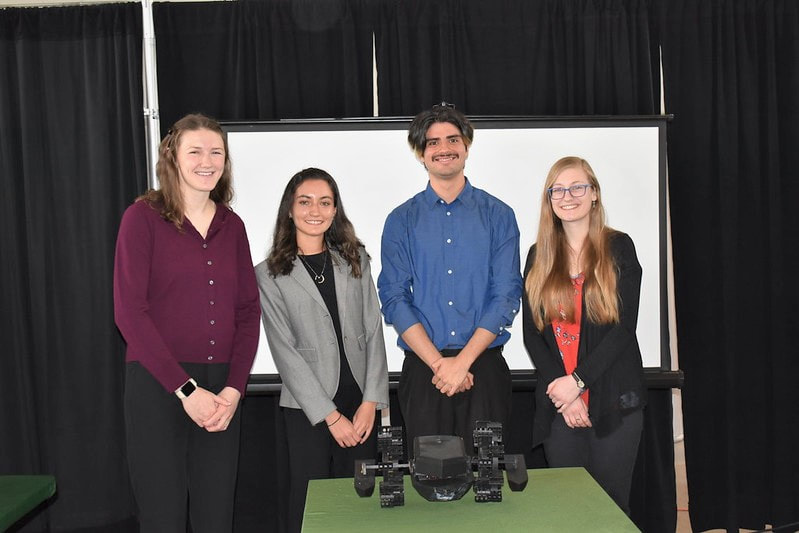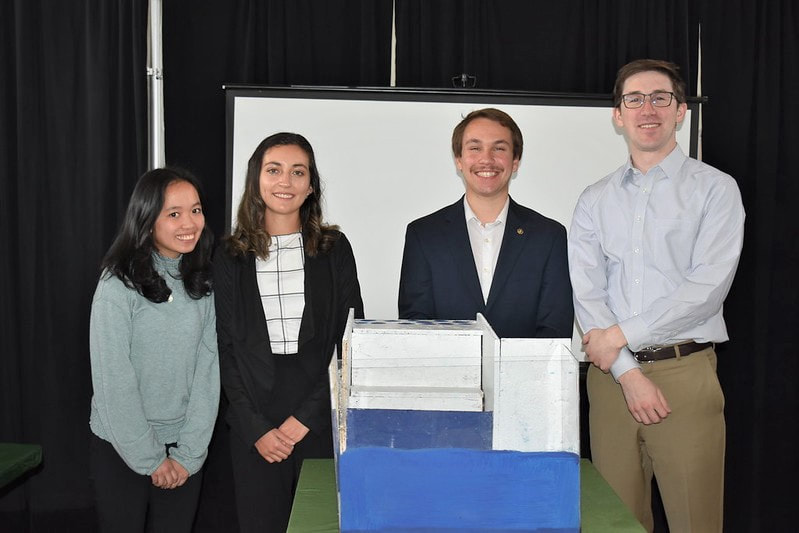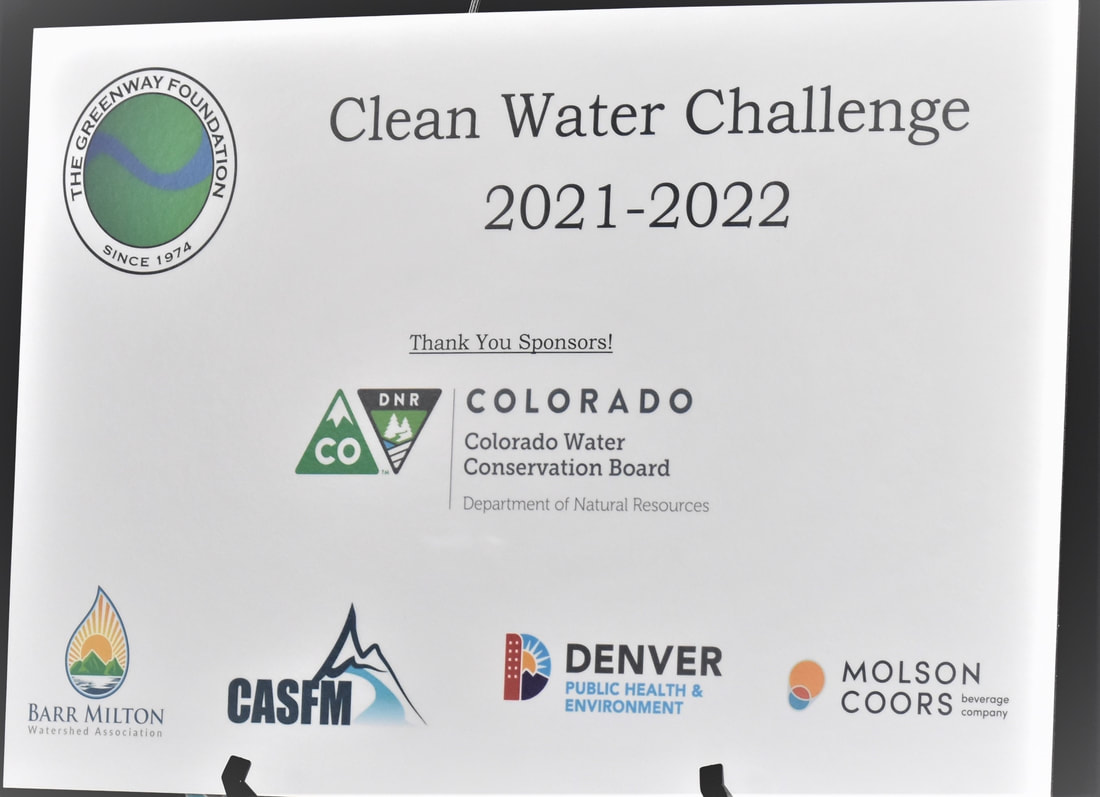Tuesday was quite the exciting day for The Greenway Foundation since we finally got to hear from the teams that participated in this year’s Clean Water Challenge. Each year the Greenway Foundation and other partners/sponsors challenges undergraduate students to engineer a proposed solutions to an issue impacting Colorado waterways. This year, we got to hear from two teams of seniors from the Colorado School of Mines who gave presentations about their proposed solutions to this years challenge; how to reduce pollutants from Colorado waterways.
Reducing E.coli levels in Cherry Creek – Team “Water” You Doing?
The first group we got to hear from, “‘Water’ you doing?” focused on reducing levels of E.coli in throughout the Cherry Creek River, with their preliminary site being at confluence park in the Cherry Creek before it reaches the South Platte. E.coli is one of the major pollutants impacting Colorado waterways and levels of E.coli frequently exceeds the state recreational standard of 126 CFU/100mL. When levels exceed this standard, waterways are no longer safe for recreational use for humans, pets, and other animals. Their design was a combined media filtration and UV system set to reduce E.coli levels to less than the state recreational standard. As shown above, the system this team designed is a passive treatment system that utilizes pre-existing infrastructure that would house the entire system. Scattered throughout the Cherry Creek River is these lock structures that adds infrastructure to be used as retaining walls for the system.
Their design utilizes physical vertical filtration methods by running water through a granular media. For their testing, ‘”Water” you doing?’ used sand as their media of choice – but there is still further testing to be done to determine ideal media for system. Water enters the system through openings at top of lock structure. As the water percolates vertically through the media filtration system it will eventually reach the secondary part of the system which treats the contaminated water with a UV light, and then the water can exit the system into the greater Cherry Creek/Confluence Park area. Through testing the system with the Quanti-Tray system for measurements and four different trial groups, all containing greater than the state recreational standard for E.coli, this group found their system to be effective at removing E.coli from waterways to objective standard.
In general, they found that most of the removal of E.coli occurred at the UV treatment stage; however, with lower flow rates, that granular sand media is able to remove more E.coli from the sample. While the results from the testing are quite promising and exciting, to make this project fully feasible, the group suggested doing further testing on different types of media and UV system, develop systems for backwashing media and for instances of high flow rates. However, we thought their re-use of pre-existing infrastructure to house their system and using low impact passive water treatments to be very innovative!
Mitigating Nutrient Pollution in Sloan’s Lake – Team N&P
The second team we got to here from was team “N&P”, who decided to focus their solution on mitigating Nitrogen and Phosphorous levels in Sloan’s Lake in Denver. This group wanted to focus on this issue/location because Sloan’s like is an important ecological system for Denver waterways, heavily used for recreation, and frequently experiences eutrophication events, and even at times has to be closed due to dangerous levels of excessive nutrients in the system. Eutrophication and nutrient pollution are very dynamic and complex issues that are happening too frequently in bodies of water all over the world, because of this they can be quite daunting to try to solve.
|
Team N&P decided to focus the stratification that occurs when there is excess nutrients in an aquatic system. This stratification results in distinct layers, in which there is only one habitable zone for life to occur in the thermocline. When aeration is provided to the system; however, then proper mixing of nutrients can occur, making it so life can successfully occur all throughout the lakes
|
water column. So Team N&P designed a paddle wheel device, that will travel across the surface of Sloan’s lake, using paddles on either side to provide that aeration or mixing to de-stratify Sloan’s Lake and make it safe for recreational use year-round. The device, as shown below, would also be connected to SMART software technology that would allow the wheel to self-navigate and connect to docking stations located in low-populated areas around the lake.
One of the most interesting and exciting things about this proposed solution is that is utilizes solar panels to charge and power the device to function throughout the lake. The
group also suggested that their paddle device is scalable and transferable to other lakes throughout Colorado making it have the potential to be useful in other lakes, other than just Sloan’s Lake.
One of the most interesting and exciting things about this proposed solution is that is utilizes solar panels to charge and power the device to function throughout the lake. The
group also suggested that their paddle device is scalable and transferable to other lakes throughout Colorado making it have the potential to be useful in other lakes, other than just Sloan’s Lake.
Voting Results!
It was so exciting to hear about these innovative and interesting solutions to dealing with pollution in our waterways! However, only one team could win this years challenge. This year’s clean water challenge was a little different since we left the voting up to the audience! The audience voted on two things, their favorite solution, and the solution that would have the greatest impact on Colorado waterways. The winner of audience favorite; Team N&P with their paddle wheel device to mitigate nutrient pollution in Sloan’s Lake! Finally, the winner of project to have the greatest impact on Colorado waterways; Team “‘Water’ you doing?” with their combined filtration and UV system to remove E.coli from Confluence park! Glad everyone was able to experience a victory this challenge, and we will see you next year!

